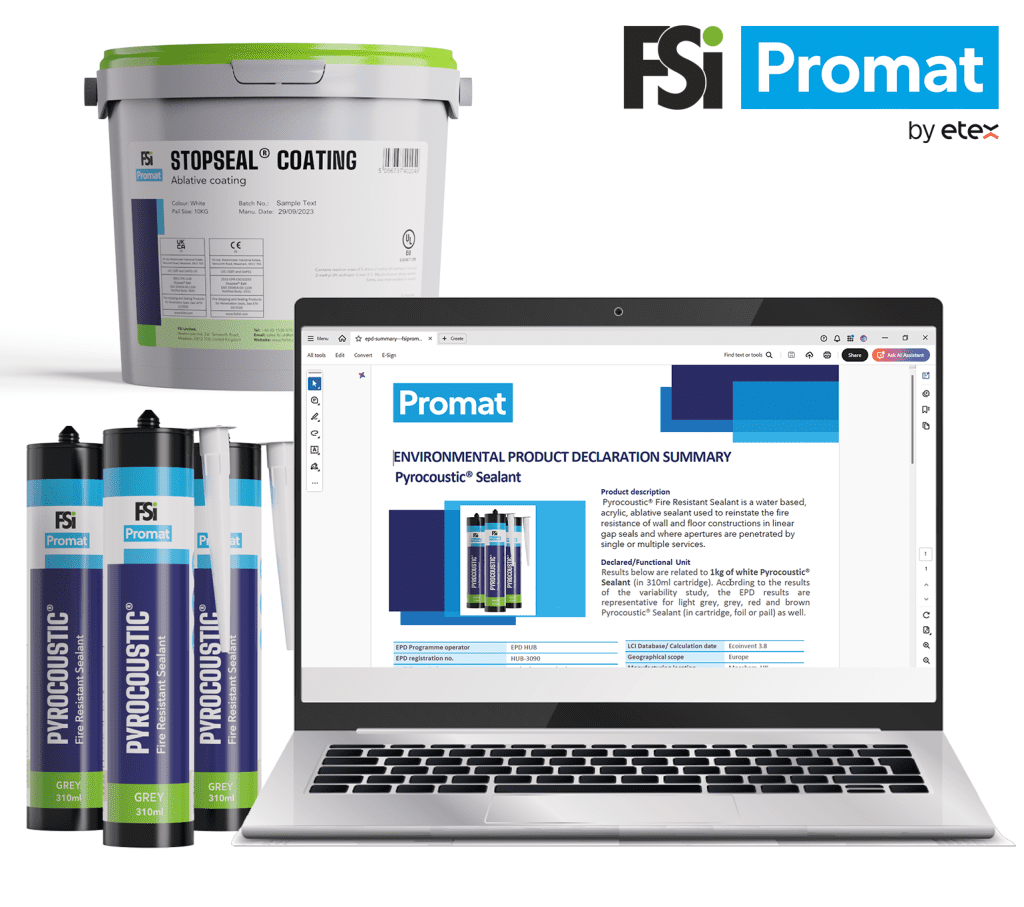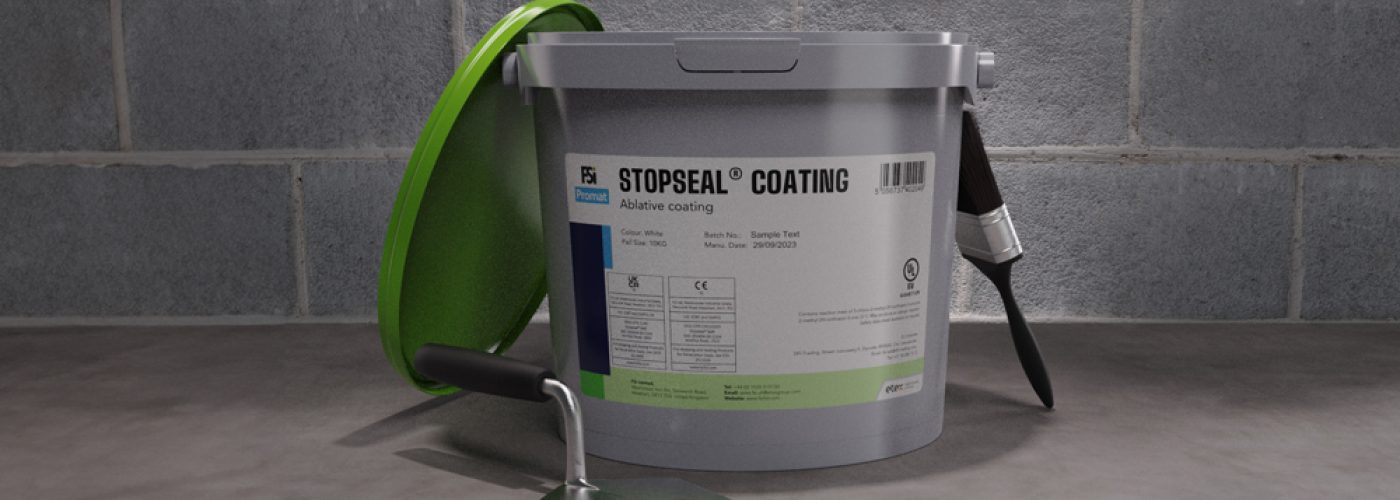FSi Promat has published new Environmental Product Declarations (EPDs) for two key products, highlighting the company’s ongoing commitment to sustainability, transparency and safety.
As a leading manufacturer of fire stopping in the UK, FSi Promat has published the EPDs to provide customers with transparent, third party-verified data on the environmental impact of Pyrocoustic® Sealant and Stopseal® Coating.
FSi Promat’s EPDs are developed in line with ISO 14025 and EN150804+A2:2019 standards, which ensure the highest level of credibility, and transparency.
Pyrocoustic® Sealant is designed to reinstate fire resistance in wall and floor construction in linear gap and service penetration seals. The environmental results of this product in the new EPD were a cradle-to-gate Global Warming Potential (GWP) of 1.0 kgCO2-Eq./kg and a total embodied carbon score of (A1 – A5, and C): 1.3kgCO2-Eq./kg.
Stopseal® Coating is an ablative coating, used with the Stopseal® Batt System, to reinstate the fire resistance performance of wall constructions that have been penetrated by single or multiple services. The key environmental results from the EPD reports this product has a cradle-to-gate Global Warming Potential (GWP) of 0.7kgCO2 -Eq./kg.
These figures are essential to mapping the overall environmental impact of a building project.

Both products demonstrate a low carbon footprint during manufacturing and a low embodied carbon score throughout their lifecycle.
Both flagship products are manufactured at FSi Promat’s Measham facility, which has recently transitioned to 100% renewable electricity, marking an additional milestone in the company’s sustainability strategy.
Emma Taylor, Marketing Manager at FSi Promat, said: “The addition of the EPDs underlines the dedication at FSi Promat to developing sustainable solutions that continue to meet high standards of safety and performance.
“The cradle-to-gate score is useful when selecting products as it provides a clear picture of its carbon footprint from the raw material right through to installation. This information helps users to understand and compare the environmental impact of the products they use, and to make an informed choice.
“Providing transparent environmental credentials, as a result of third-party evaluation, is one of the key ways in which we support architects, specifiers, and contractors towards a safer, more sustainable future. This commitment aligns with the broader construction industry’s shift towards more sustainable building methods.”
Building, Design & Construction Magazine | The Choice of Industry Professionals





